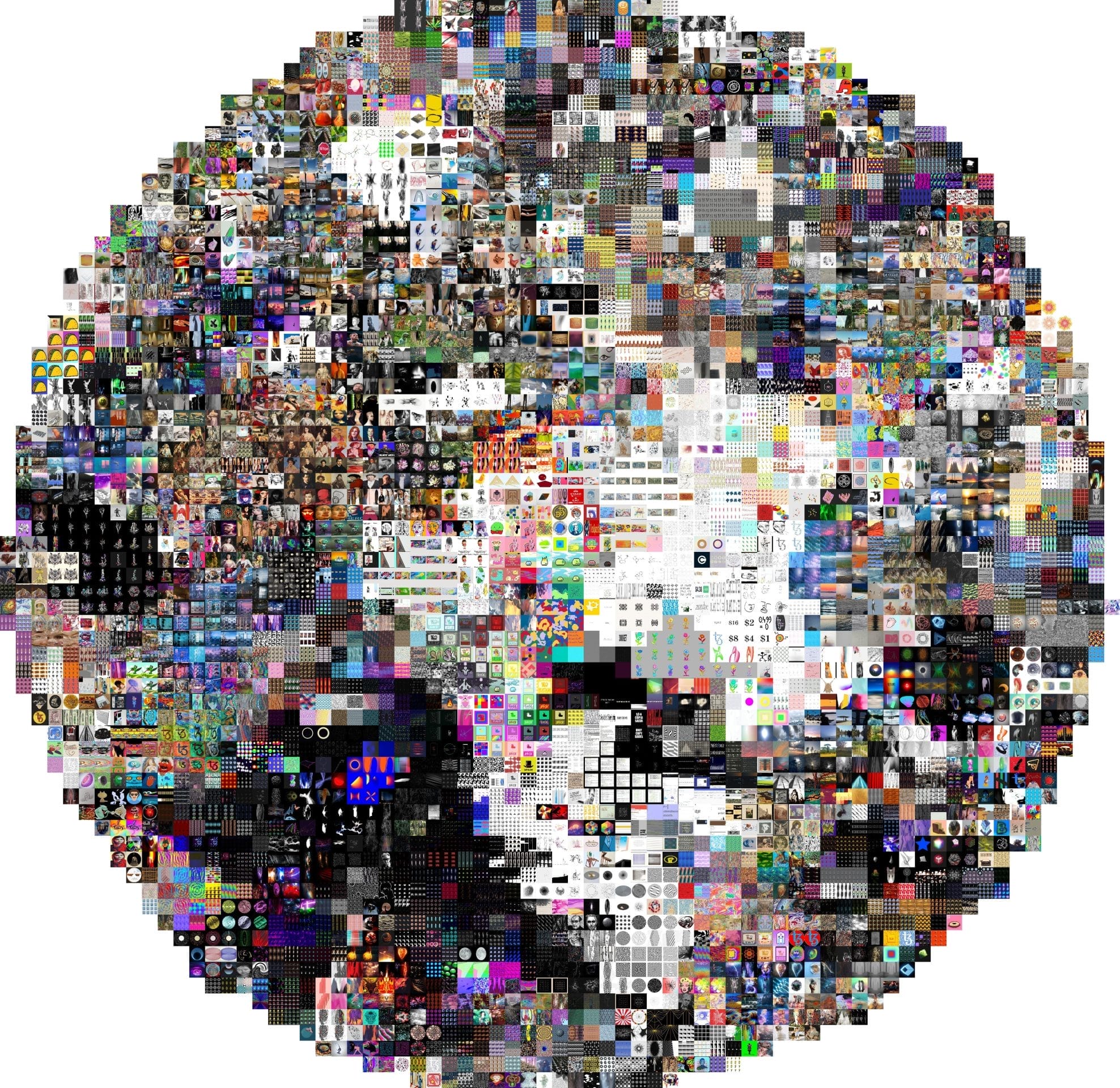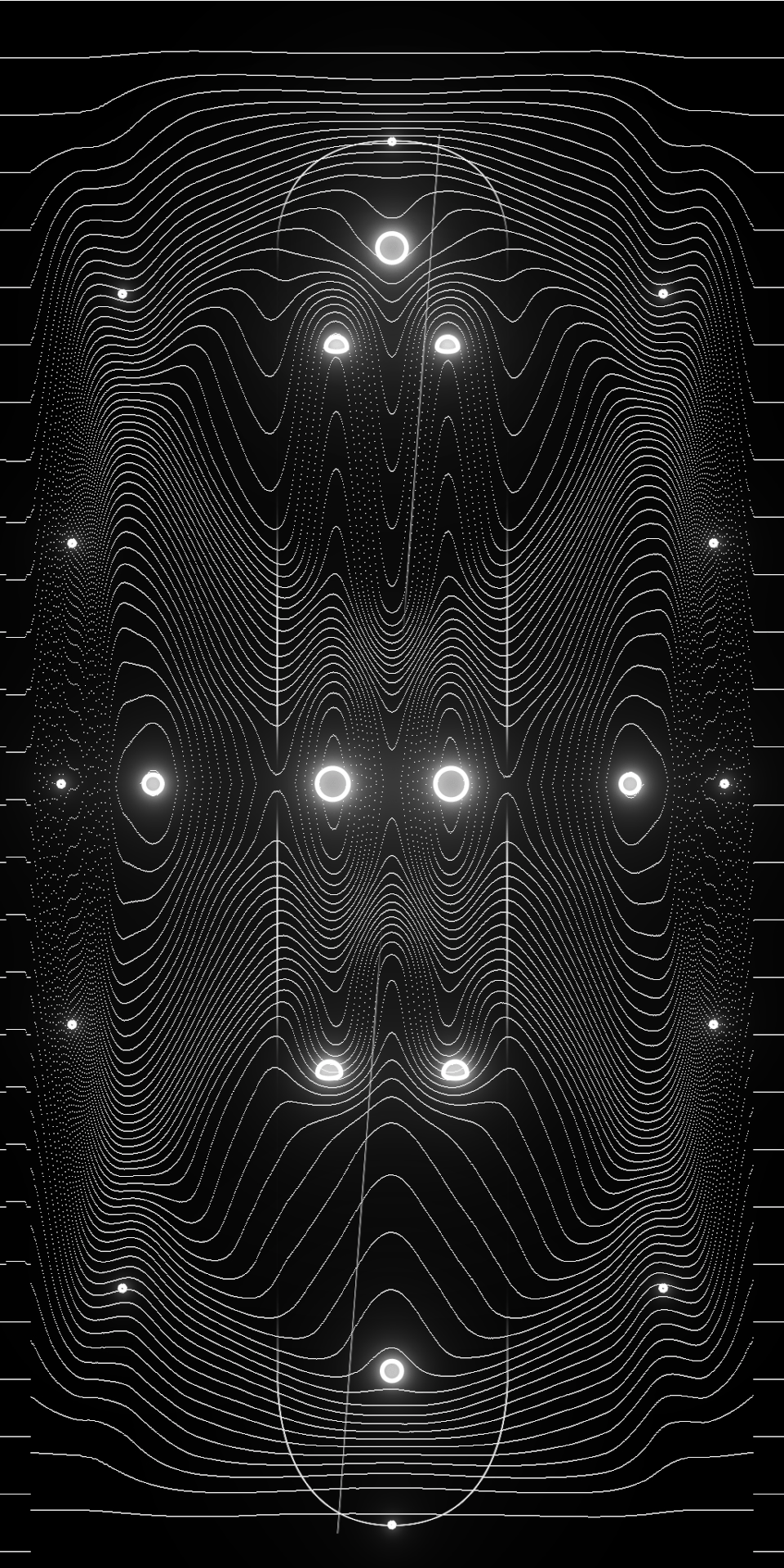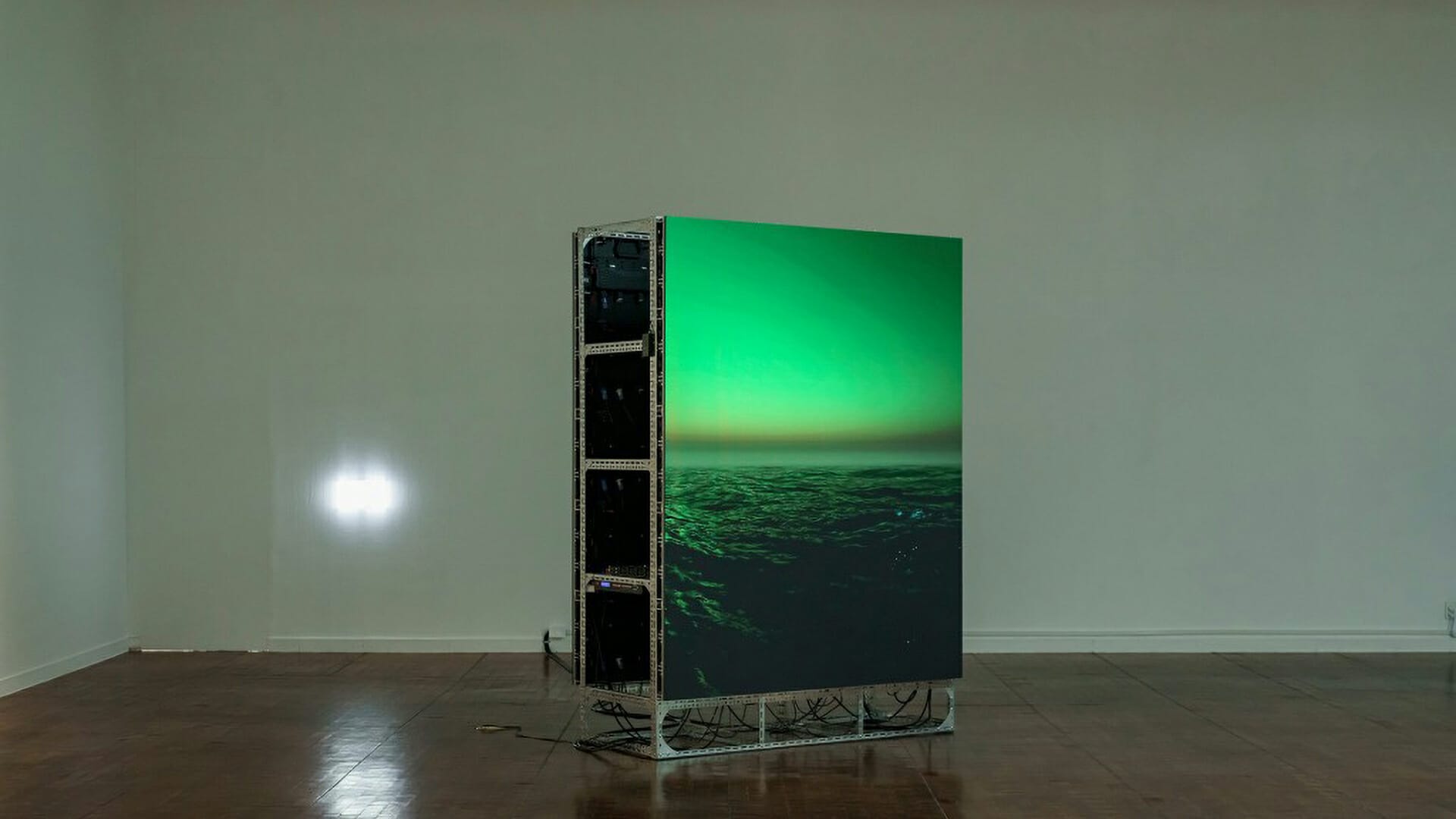
Voices of Hic et Nunc: The People that Shaped its History
In our commemorative article dedicated to the history of Hic et Nunc (HEN), we highlighted the foundational efforts of several community pillars. Their stories, however, are so rich and full-bodied that a single piece can hardly do them justice. Because of this, we dedicate this space to the in-depth conversations with those who not only envisioned but also built the community of HEN.
This article features the extensive interviews with Mario Klingemann, whose artistic and technological innovations fostered community cohesion; Diane Drubay, who championed community engagement and sustainability; and James Paterson (Presstube), whose grassroots approach and commitment to the platform’s egalitarian ethos have been instrumental in nurturing the platform’s unique culture.
Each narrative weaves into the larger story of HEN, offering a mosaic of perspectives that shape our comprehensive understanding of this influential digital art community.

Mario Klingemann: Envisioning Community Through Art
In the realm of Hic et Nunc (HEN), few names resonate as profoundly as Mario Klingemann, known in the digital art community as Quasimondo. His pivotal piece, ‘This is Not a Code of Conduct v1.0,’ not only showcased his artistic depth but also laid down a philosophical framework for HEN’s community. Beyond his artwork, Klingemann’s insights into the platform’s evolving culture shaped a unique path for artistic expression and collaboration.
Fakewhale: Mario, how would you describe the initial sentiment and energy within HEN’s community, and how did it influence your artwork and interactions on the platform?
Mario Klingemann: When I discovered HEN almost by accident it was in its very early stage and there was no visible community nor was there a marketplace. It was just a very minimal experimental website with one feature: it allowed you to mint any kind of data on the Tezos blockchain and you could see what others had minted. I found that very attractive since I had already been looking for alternatives to the proof of work minting on Ethereum which at that time had come under fire from many sides as being an environmental concern. But I also found the no-frills approach, with the focus on the art and not on loud obnoxious shilling be more in accord with my personality.
So this felt like a blank canvas, a new land on which we could try to build something different.
So I used my reach on Twitter to tell others about HEN and as it turned out other artists in my network found what they saw equally promising – in particular many artists who until then had stayed clear of NFTs for various reasons – either out of ecological responsibility or since they lacked the funds to participate on Ethereum given how high the minting costs were around that time (sometimes over $100 in gas fees for minting an NFT)
I believe that this nucleus of artists from very diverse backgrounds was one of the reasons that the Hic Et Nunc community was able to emerge and grow into the form as it did. Since what was there in the beginning was kind of a singularity and even small variations in the starting conditions can lead to very different outcomes in a chaotic and unpredictable system as this.
I think it was in particular the early months of Hic Et Nunc that gave those who were part of it that unique feeling that it is actually possible to create something from nothing or pull oneself out of a swamp by pulling on ones own hairs. You could see this organism grow day by day, discover new artists and their art and as an artist oneself get that wonderful feedback that someone out there appreciates your work so much that they actually buy it.
Fakewhale: Your piece, “This is Not a Code of Conduct v1.0,” has been seen as a foundational text for the HEN community. What were your inspirations and intentions behind creating it?
Mario Klingemann: As I already hinted at above I had the feeling that Hic Et Nunc had the potential to grow into something special but in order to do that it needed some kind of gentle force or guidance to make its growth to be attracted in some directions more than others. At the same time I don’t know any more about communities as anyone else, so I would not have dared to tell anyone what to do or not to do. I was hoping for a live-and-let-live atmosphere of shared tolerance, but at the same time I do not like, what feels to me like a passive-aggressive authoritarian tone of certain “code of conducts” that have set their roots into many communities over the past years. I do not know whether putting that document out there did make any difference in how HEN evolved, but since at least in my eyes we had an amazing time together for quite a while it did not have seemed to have prevented HEN from becoming what it became.
Fakewhale: Can you expand on the balance between an artist’s need for personal expression and the larger goal of maintaining a cohesive community dynamic, especially in decentralized platforms like HEN?
Mario Klingemann: I am not sure if I can relate to that goal of having a cohesive community. Of course there is always the wish or hope that once a dynamic system has reached a state that one finds desirable to freeze or preserve that state forever, but that could only be done for the price of losing the dynamic element that got the system into that state in the first place. It’s like in a relationship where you would love to maintain that freshly fallen in love feeling forever, but as we all know, human nature does not allow for that to happen. So my way of coping with this is to “enjoy it whilst it lasts” but at the same time be on the lookout for the faint early signals or patterns that might hint at that the current state is starting to change. And sometimes one can still try to nudge the system with small measures to stay in it’s current orbit or prevent it from collapsing.
Fakewhale: How do you think HEN managed to address the gap of inclusivity that was evident in the pre-HEN NFT landscape?
Mario Klingemann: I think it just did it mostly naturally due to the circumstances out of which it was born. The problem I see with forced inclusivity is that it usually means “inclusive with people that look, talk or make art like me” and that often the signalled tolerance ends once it becomes uncomfortable – whereas true tolerance starts at the point where I have to tolerate behavior or words that do not confirm with my personal world view. And it that sense It is also my feeling that the abrupt ending of Hic Et Nunc was in part caused by a rather one-sided view o whatf tolerance and inclusivity means. Fortunately the “atoms” that made up the matter out of which HEN was made had already developed such strong bonds that the ideas and ideals that had emerged during its existence were able to restructure themselves in the various new constellations that we have still around today.

Diane Drubay: Weaving Community Threads
Diane Drubay, a prominent figure in the art and culture space on Tezos and the founder of We Are Museums, Alterhen, and Artezic, has been instrumental in cultivating the community and sustainable practices within the HEN platform. Her environmental artistry and curatorial work have enhanced the community-focused ethos of HEN.
Fakewhale: When you think back to the early days of HEN and the NFT landscape, what stands out the most to you?
Diane: As I recall the early days of Hic et Nunc, my heart swells with a tender blend of nostalgia and admiration. It was a haven of creativity where generosity wasn’t just a word, but the very currency that coursed through its veins —a space that gave artists a voice, a spotlight, a chance.
Hic et Nunc was more than a marketplace; it was a philosophy, a statement of intent, a demonstration of the democratizing power of blockchain technology. It was about dismantling the longstanding gates of exclusivity that kept many capable and imaginative minds at bay. The established order, which often seemed to favor a select few, was now being challenged. Now, art was not dictated by a name or a price tag; it was purely about the emotion it evoked.
I remember the first time I minted an NFT. It took me a week to figure out which piece will be the chosen one, while the community was already running fast on the highway of art sharing. The speed of this space was both scary and exhilarating. In a few days, Hic et Nunc became the canvas for all forms of digital expressions for people coming from all corners of the Planet. From JPEGs, GIFs, 3D models to short films, the platform became a melting pot of digital creativity, transcending geographical and socio-economic boundaries.
Fakewhale: How did the ethos of HEN resonate with your personal vision of what an NFT platform should represent?
Diane: In the visionary expanse of Hic et Nunc, I found the embodiment of the 5 Ys that define my ethos. It championed liberty, allowing artists to freely mint any form of digital art they desired. It fostered agency, letting both artists and collectors try out new features and contribute ideas. The diversity was clear and present, with a wide range of mediums, cultural expressions, and artists from all over the globe. Generosity was at the core of its community, especially highlighted by events like OBJKT4OBJKT, where artists exchanged works, creating a cycle of giving. Lastly, the commitment to quality was unwavering, ensuring that the art was not just visually striking but also meaningful and impactful.
Fakewhale: Looking back on the two years since the closure of Hic et Nunc (HEN), how has your journey evolved in the digital art and NFT space, and what impact has the legacy of HEN had on your professional and personal development?
Diane: The past two years have been an extraordinary journey of growth and discovery, thanks to the vibrant world of hic et nunc and its legacy. As soon as I started minting on hic et nunc, I jumped on this highway of creativity, collaboration and fulfilling moments togetherness. Of course, co-producing the hicathon was a major step, but also co-founding alterHEN and Arteztic. Then, taking the lead as Head of Art for the Tezos ecosystem and initiatives like WAC Lab, my 2021 endeavor to bring museums into web3, have broadened my horizons exponentially.
This journey has transformed me, not just professionally but personally. I’ve blossomed as a digital artist, finding inspiration and opportunities to share and exhibit my work, but even more, to talk about it and find friends and collectors to support me. My evolution into a digital art collector, especially with a focus on environmental art, has also been a surprising and fulfilling path. Through my journey, I delved deep into the realms of web3, decentralization, blockchain, and AI technologies. Exploring the history of this new technology and its use cases made me take some steps back and understand that innovative non-financial models like hic et nunc have been explored before with platforms like Editional and are still being unpacked with ZeroOne. This overall perspective made me understand the time we are in, and how each of our projects are contributing to a monumental collective project.
But what truly set hic et nunc apart for me was its genuine global diversity. It felt truly planetary, not just trendy. Only yesterday, I collected pieces from artists living in Indonesia, Quebec and Brazil. Collecting art and developing new web3 projects are still bringing me so much joy. I’m working on multiple exciting projects that I can’t wait to unveil, all sparked by those magical months at hic et nunc.

James Paterson aka Presstube: The Grassroots Innovator
James Paterson, aka Presstube, known for his authentic and hands-on approach, embodies the spirit of innovation and the grassroots ethos that became a hallmark of HEN. His initial encounter with the platform’s rudimentary interface and his role in fostering a pay-it-forward culture showcase a commitment to community-building and open artistic exchange. His reflections offer a window into the soul of HEN, revealing a platform that championed the raw, the real, and the communal, and stood as a counterculture to the established art world.
Fakewhale: When you think back to the early days of HEN and the NFT landscape, what stands out the most to you?
Presstube: At the beginning, HEN was really hard to use. It had an impenetrable, buggy user interface. I had to follow a janky PDF marked up with hand-drawn arrows, underlines and circled items in order to mint my first piece. However, there was an energy in that moment which pushed the early users to get in there and move through the difficulty. It’s interesting bc we’re so used to expecting slick, smooth UX in our products, then here comes this thing that’s hard to use, crashy, cryptic and unstable, yet something about the energy of the moment made it obvious that the effort was going to be worthwhile. The difficulty of using it almost became part of the fun. It was like finding your way into a hard-to-reach, secret garden – not easy to get into, but once you arrive, it’s an untouched zone of fresh possibility.
At the time you needed a fair amount of money to operate on ETH. To mint could end up costing hundreds of dollars, you typically needed invitations for the popular marketplaces, and there was a lot of controversy surrounding ETH’s carbon impact etc. Yet here was this super underground grass-rootsy thing where all you needed was 1 TEZ to get going (at the time, worth about $4 USD). 1 TEZ provided a lot of minting power so that a new artist could discover if they had an audience and keep things rolling purely based on the quality of their work and their participation in the community.
This effort/talent over resources/access dynamic caused a massive surge of artists from all over the world to pour in and seeded a wildly multicultural scene. Artists from all over the globe got involved and in some cases, the TEZ they earned could pay for rent and groceries. That was a revelation for many of us, regardless of our location. Making any kind of a living off pure art. Wow.
So, during this early moment, HEN was beautifully egalitarian. It rewarded those who made an effort, not necessarily those who already had money or popularity. There was a deliciously anarchic/utopian flavour reminiscent of the promises of the dawn of the internet.
Fakewhale: Can you share any stories or experiences that epitomize the unique culture and community spirit of HEN?
Presstube: Two phenomena stand out:
In the beginning, it was normal for random strangers to gift a new arrival the ~1 Tez necessary to get started. This caused a snowballing pay-it-forward effect where artists were bootstrapping other artists to get going in a huge chain reaction of generosity and appreciation. This seeded the community with a sense of goodwill and friendliness which reminded me of skateboard culture. In the world of skateboarding any new skater, no matter how clueless, is accepted and encouraged with open arms. Unlike surfing, which by comparison is notoriously cliquey, aggressive and unwelcoming to newcomers.
Another thing I loved was the community-instigated events like #OBJKT4OBJKT where everyone would pile in behind a hashtag on Twitter and post their work for cheap/free and we would all collect each other’s work en-masse. It was like being at a massive digital zine bazaar. It was such a great place for the organic discovery of new artists.
Fakewhale: How did the ethos of HEN resonate with your personal vision of what an NFT platform should represent?
Presstube: It was DIY, gritty, punk, and anarchy. I have always dreamed of making a living off art outside the institutional gatekeeping of the Fine Art establishment. HEN was a shiny beacon of possibility on that front.
Fakewhale: With the emergence of platforms inspired by HEN, such as http://objkt.com and TEIA to name a few, what lessons from HEN do you think should be carried forward and which should be avoided or approached differently?
Presstube: I may be too closely focused on making art to pretend to know how things should be handled at the platform level at this point. The magic of early HEN seemed to be highly serendipitous, flowing out of the moment and directed by the inspired, raw vision of Raphael and a small cadre of mostly volunteer contributors. All that come after are dealing with a different time and place and different cultural currents. Your guess is as good as mine about what makes sense for now! I’m happy to leave that to the grownups.
Fakewhale: In retrospect, what do you believe was HEN’s most significant contribution to the digital art community as a whole?
Presstube: I think HEN demonstrated a path for an art subculture where low operating costs and highly fractionalized art pricing/ownership could lead to a vibrant scene where artists support each other. In a time rife with “audience capture”, what better audience to be captured by than fellow creators whose art you adore!
Fakewhale: How do you see the current digital art ecosystem in contrast to the early days of HEN? What fundamental shifts have you noticed?
Presstube: To be honest I’m a bit out of touch and don’t have my finger on the pulse of what’s going on right now. Others are likely better qualified to answer here.
However, if I were to indulge in a hot take… Seeing the rise of generative art and then the rise of AI art, it’s going to be really interesting to see how the ease of automation and a glut of new creative technologies flood the landscape with passably aesthetically pleasing stuff. How do audiences react to that? How do creators react to that? What happens to artists who still use very personal/traditional processes? How do we find our bearings in a world where there is more and more automation in these very sensitive areas? Not just in areas of cold efficiency but in the most personal and creative areas: writing, drawing, painting, animating, music, movies, creative coding etc
To be clear I’m all for generative art (been at it since the early 2000s) and fascinated by the possibilities of AI all around. However, the relationship between automation, creativity and commodity raises some spicy spiritual questions for me.
Fakewhale: What legacy has been brought forward?
Presstube: I hope the legacy that can be brought forward is to herald rawness, ruggedness, and highly personal, inefficient expressions by and for beings who are steeped in the unavoidable challenges of the human experience.
Fakewhale: In the aftermath of HEN’s closure, what were your key takeaways from its journey? What would you have wished was done differently?
Presstube: My personal takeaway from the journey: Spend less time on politics and more time on making stuff. Also when in doubt, trust generosity, patience and kindness.
I’ll bow out of answering what I wish was done differently. It was a beautiful experience, warts and all.
The shared narratives of Mario Klingemann, Presstube, and Diane form a mosaic of HEN’s impactful history, underlining a legacy rich with innovation, connection, and artistic freedom.
As we continue present the full scope of HEN’s story through these individual insights, we invite you to explore the next chapter—focusing on the artists and collectors who represent the vivid threads in the fabric of HEN.
Read next: The Essence of HEN: In Conversation with the Artists and Collectors

fakewhale
Founded in 2021, Fakewhale advocates the digital art market's evolution. Viewing NFT technology as a container for art, and leveraging the expansive scope of digital culture, Fakewhale strives to shape a new ecosystem in which art and technology become the starting point, rather than the final destination.
You may also like
Yuri Pattison: Bridging the Digital-Physical Divide
Yuri Pattison is an Irish artist whose oeuvre masterfully juxtaposes the tangible with the digital,
K.T. Kobel, CLOSED VIEWS at Projectspace 38 / 40, Amsterdam
“CLOSED VIEWS” by K.T. Kobel, curated by Pim Lamme, at Projectspace 38 / 40, Amsterdam,
4 – Carnage in Rockford Illinois
Washington D.C, United States On the Blackhawk helicopter ride to Washington D.C., Dasher spent the





